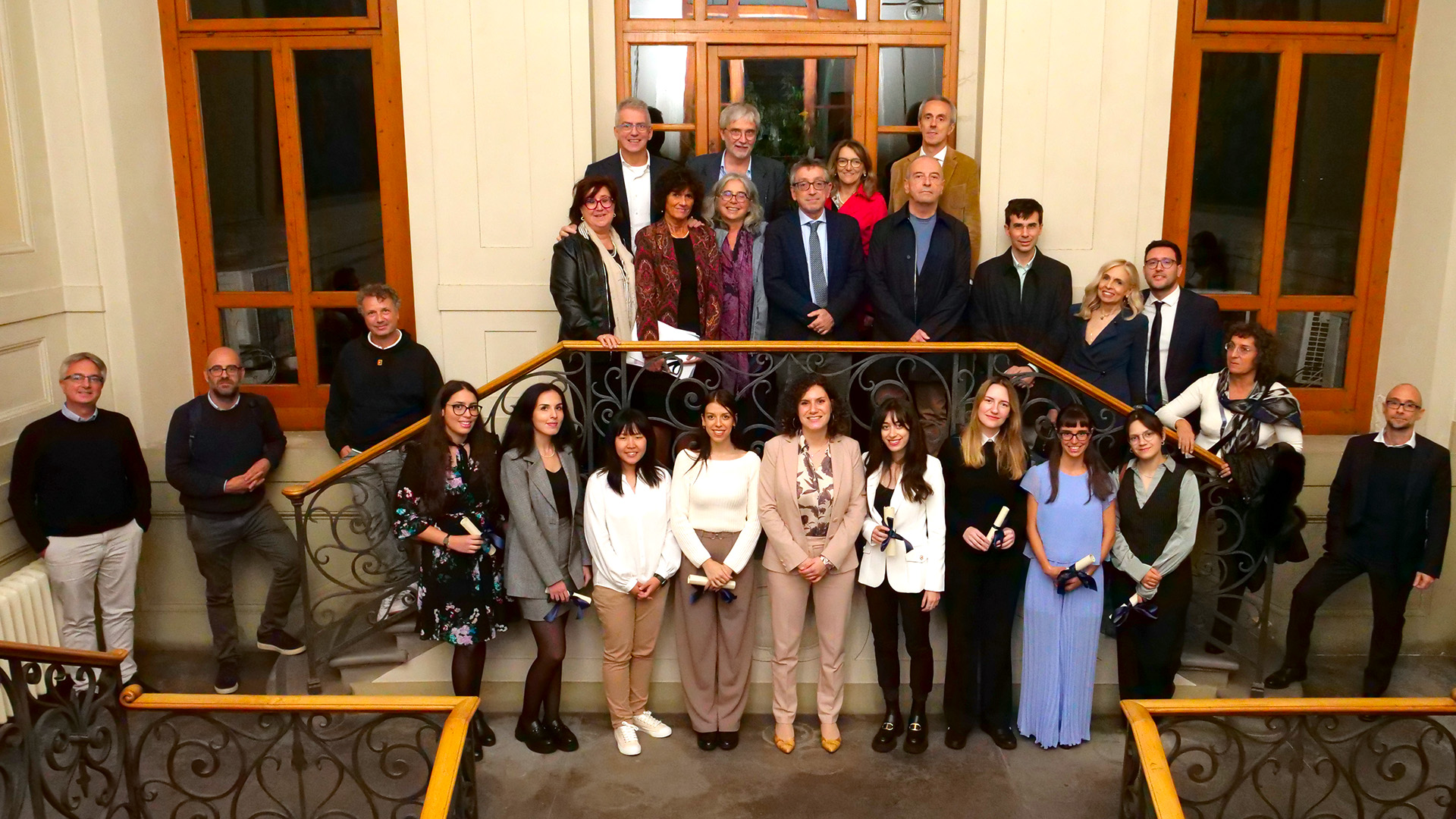
It is the most precise measurement ever obtained at CERN’s Large Hadron Collider (LHC) accelerator of the mass of the W boson, and determines its value to be 80360.2 MeV with an uncertainty of 9.9 MeV. The measurement was made by the CMS experiment by analysing data produced in proton-proton collisions of the second LHC data-acquisition period (run2). The result, much awaited by the international particle physics scientific community, was presented by the CMS Scientific Collaboration at a seminar held today, 17 September, at CERN.
“The measurement of the mass of the W boson was obtained by CMS through a state-of-the-art analysis of the data produced at the LHC”, underlines Giacomo Sguazzoni, INFN researcher and national manager of CMS. “The precision achieved was unimaginable when the LHC and CMS were conceived, and is the result of the dogged and passionate work of many colleagues engaged in research activities that, over the years, have enabled CMS, a very complex and sophisticated detector, to achieve performance far beyond that originally envisioned by the project”, concludes Sguazzoni.
“This measurement is the result of many years of capillary work during which we faced and solved numerous experimental problems”, explains Lorenzo Bianchini, Professor of physics at the University of Pisa, INFN associate, and coordinator of the ERC ASYMOW project dedicated to this very measurement. “We built on the experience acquired from similar measurements at the LHC and the Tevatron, addressing critical issues with recent advances in theoretical precision calculations and new data analysis paradigms. What emerged was a modern and innovative measurement in many respects, the result of international collaborative effort in which the Italian contribution was extremely important, also thanks to the opportunities offered by European research funding. All this using only a tenth of the run2 data, thus leaving ample room for improvement of the measurement in the coming years”, concludes Bianchini.
Since its discovery, the W boson has been measured with increasing precision by various experiments, at CERN and other laboratories. The result now presented by CMS agrees with theoretical predictions and with all previous measurements, except that obtained by the CDF experiment at Fermilab’s Tevatron accelerator in the United States.
In 2022, the CDF Scientific Collaboration had, in fact, measured a surprisingly high value of the W boson mass of 80434.0 MeV with an uncertainty of 9.4 MeV: a value that differs significantly from the theoretical prediction of the Standard Model and other experimental results, requiring further study. In 2023, the ATLAS collaboration, which had provided its first measurement of the mass of the W boson in 2017, published a new improved measurement based on a reanalysis of proton-proton collision data from the first LHC data-acquisition period (run1). The new value of the W mass determined by ATLAS - 80366.5 MeV with an uncertainty of 15.9 MeV - was in line with all previous measurements except that of CDF, which still remains the most precise measurement obtained to date. Now, the CMS experiment, with its first measurement of the mass of the W boson, also brings its contribution to these studies, and its result is confirmed to be in line with all previous measurements except, as already mentioned, that of CDF.
Together with the Z boson, the W boson is the elementary particle mediating the weak force and was first observed in 1983, by the UA1 and UA2 experiments at CERN’s Super Proton Synchrotron (SPS) accelerator. For this discovery, Carlo Rubbia, who led the UA1 experiment, and Simon van deer Meer, were awarded the Nobel Prize in Physics the following year. The Standard Model puts the mass of the W boson in close relation to the force of the interaction unifying the electromagnetic and weak forces, and to the masses of the Higgs boson and the top quark, constraining its value to 80353 million electron volts (MeV) with an uncertainty of 6 MeV. Determining the value of the mass of the W boson with high precision is therefore very important because it allows us to verify whether these properties are all consistent with the Standard Model. If they are not, the cause would lie in new physical phenomena, such as new particles or interactions.
“The value of the mass of the W boson derives, in the Standard Model, from two fundamental ingredients: the strength of the weak interaction – of which it is a mediator – and the value of the Higgs field, which is responsible for generating the mass of all elementary particles observed to date”, explains Stefania De Curtis, director of INFN’s Galileo Galilei Institute. “Thus, this new measurement represents a further success of our theory because, given its precision, which exceeds all expectations, it confirms the prediction at the level of the quantum corrections that contribute to its value. The alignment at the quantum level with theoretical predictions indicates that, at least for the W mass, no new phenomena or particles are needed to explain its nature. This does not rule out that they are not lurking around the corner and that LHC experiments may ‘discover’ them in the near future in order to shed light on the still open problems of the Standard Model”, concludes De Curtis.
 A small INFN apparatus for detecting cosmic rays, the shower of particles that constantly hits us from space, set sail on October 7, from Darwin, Australia. Hosting it was the Amerigo Vespucci, a training ship of the Navy, an ambassador of Made in Italy in the world, currently engaged in the World Tour. On board the ship, INFN's detector will be able to explore very different geomagnetic field regions and measure the flux of cosmic rays as the Earth's latitude changes. Indeed, the route involves passing through the equator in the Jakarta region, where the geomagnetic field is more intense than its average value on Earth, so a reduction in the flux of cosmic rays reaching the Earth's surface should be observed, since they largely consist of charged particles. The historic sailing ship, which departed from Genoa on 1 July 2023, will dock in the ports of Singapore, Belawan, Phuket, Mumbai, Karachi, Doha, Abu Dhabi, Muscat, Jeddah, and Alexandria, Egypt, in the coming months before concluding its journey in Genoa on 10 June 2025.
A small INFN apparatus for detecting cosmic rays, the shower of particles that constantly hits us from space, set sail on October 7, from Darwin, Australia. Hosting it was the Amerigo Vespucci, a training ship of the Navy, an ambassador of Made in Italy in the world, currently engaged in the World Tour. On board the ship, INFN's detector will be able to explore very different geomagnetic field regions and measure the flux of cosmic rays as the Earth's latitude changes. Indeed, the route involves passing through the equator in the Jakarta region, where the geomagnetic field is more intense than its average value on Earth, so a reduction in the flux of cosmic rays reaching the Earth's surface should be observed, since they largely consist of charged particles. The historic sailing ship, which departed from Genoa on 1 July 2023, will dock in the ports of Singapore, Belawan, Phuket, Mumbai, Karachi, Doha, Abu Dhabi, Muscat, Jeddah, and Alexandria, Egypt, in the coming months before concluding its journey in Genoa on 10 June 2025.









